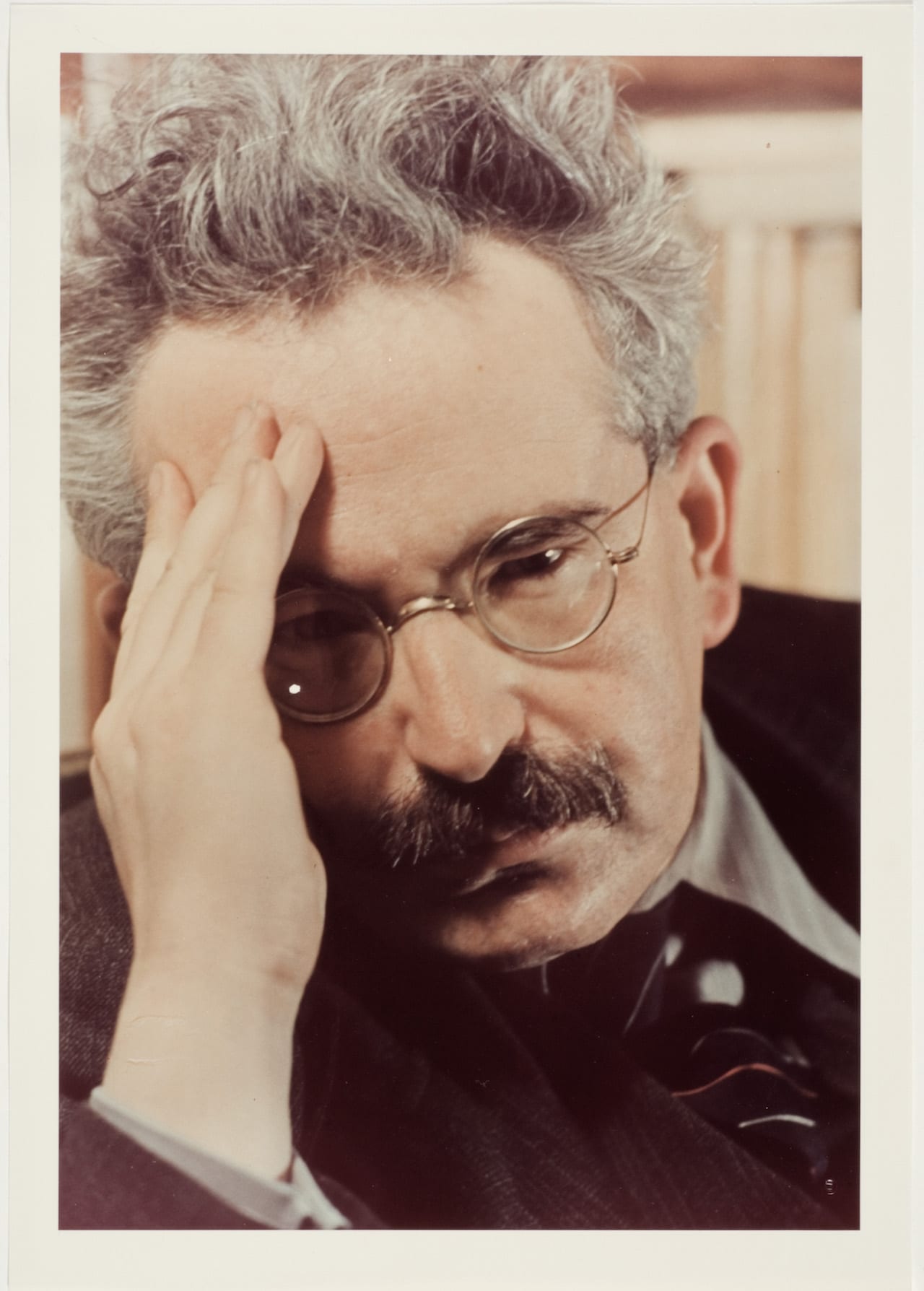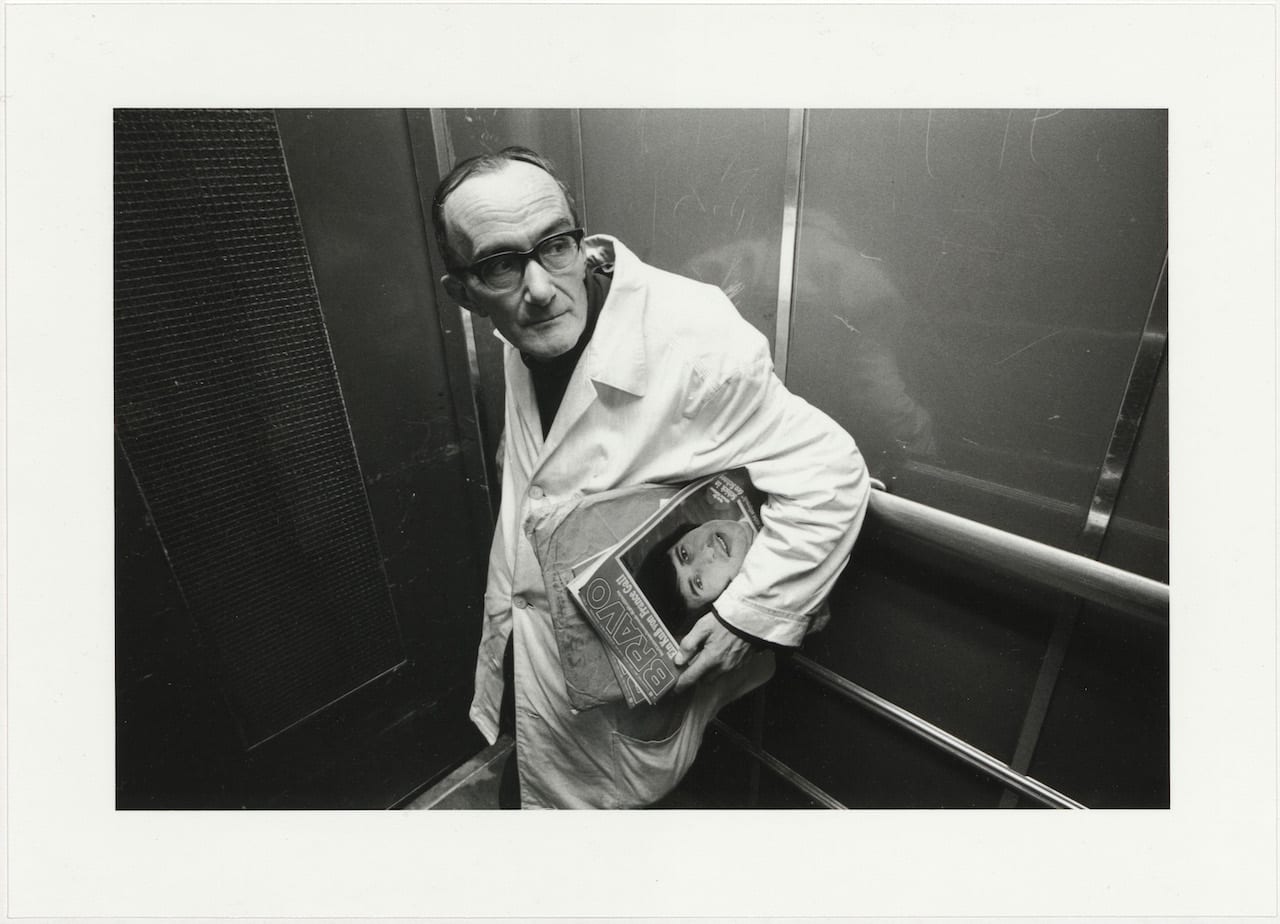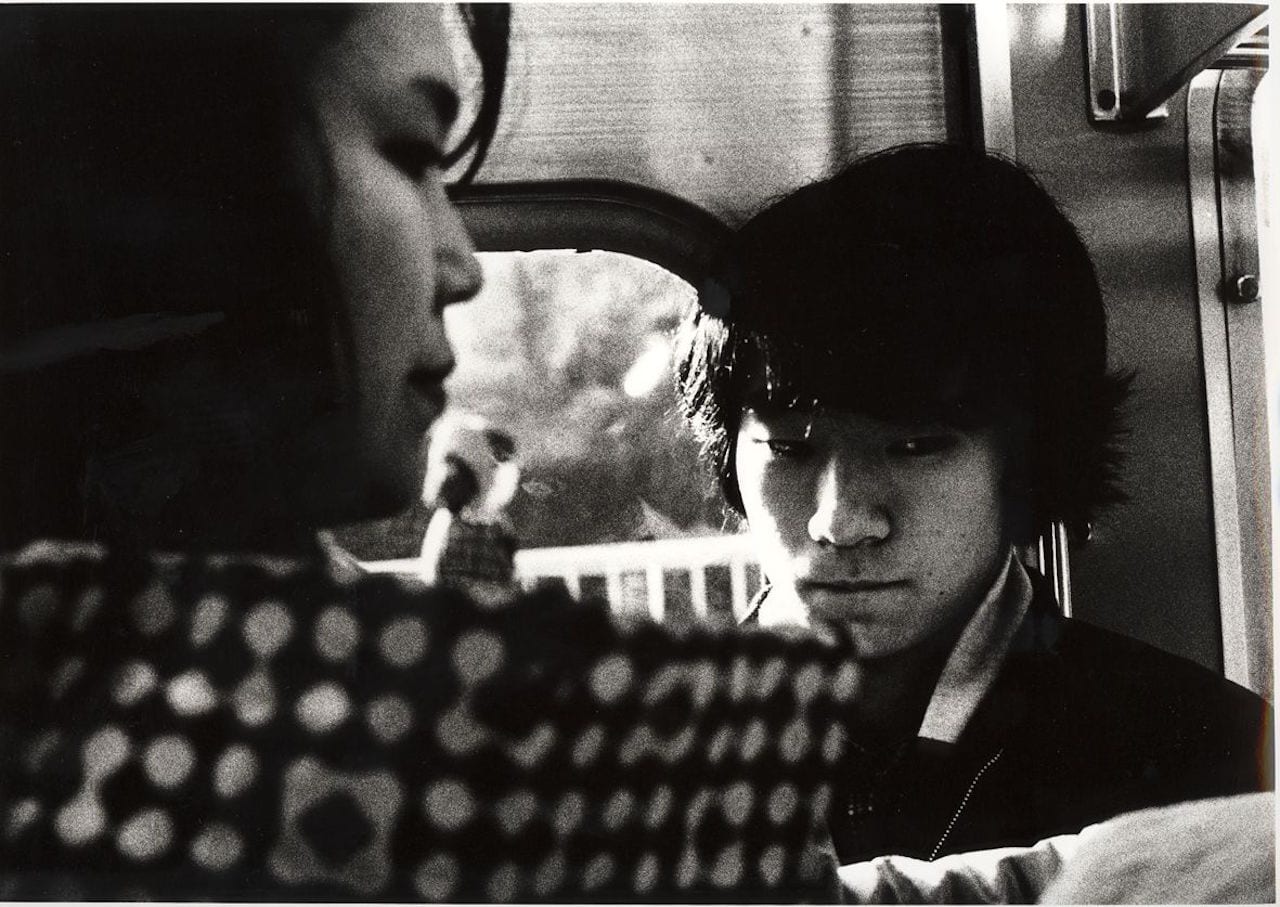In terms of history and photography, 1938 was a significant year. With Germany’s annexation of Austria, the Munich Agreement, the November Pogrom and the Évian Conference, which addressed the international response to the refugee crisis, it was a decisive point in time, with repercussions that would shape generations to come. It was also the year that six iconic photographers, who would document this shifting world, were born. This spring, the occasion will be honoured with a special celebration at the Sprengel Museum Hannover, titled 1938. Birthday Party with Guests.
Initiated to commemorate the 80th anniversary of German photographer Heinrich Riebesehl, whose archive is housed at the museum, the exhibition evolved into a wider historical survey that sketches an international perspective on the second half of the 20th century. Joining Riebesehl are Johan van der Keuken, Josef Koudelka, Boris Mikhailov, Daido Moriyama and Helga Paris. For curator Inka Schube, this wave of artists born in 1938 represents a very particular generation: those who experienced the Second World War as children, too young to remember much more than playing in its rubble but growing up in the world it created.
Organised in chronological order, 1938. Birthday Party with Guests proposes a walk through history that is in direct dialogue with the present, courtesy of some younger guests. Each room contains work by one of the six artists, as well as a contemporary response. “The idea was to invite younger artists to create an ‘echo space’ for the work of the older generations,” Schube explains.
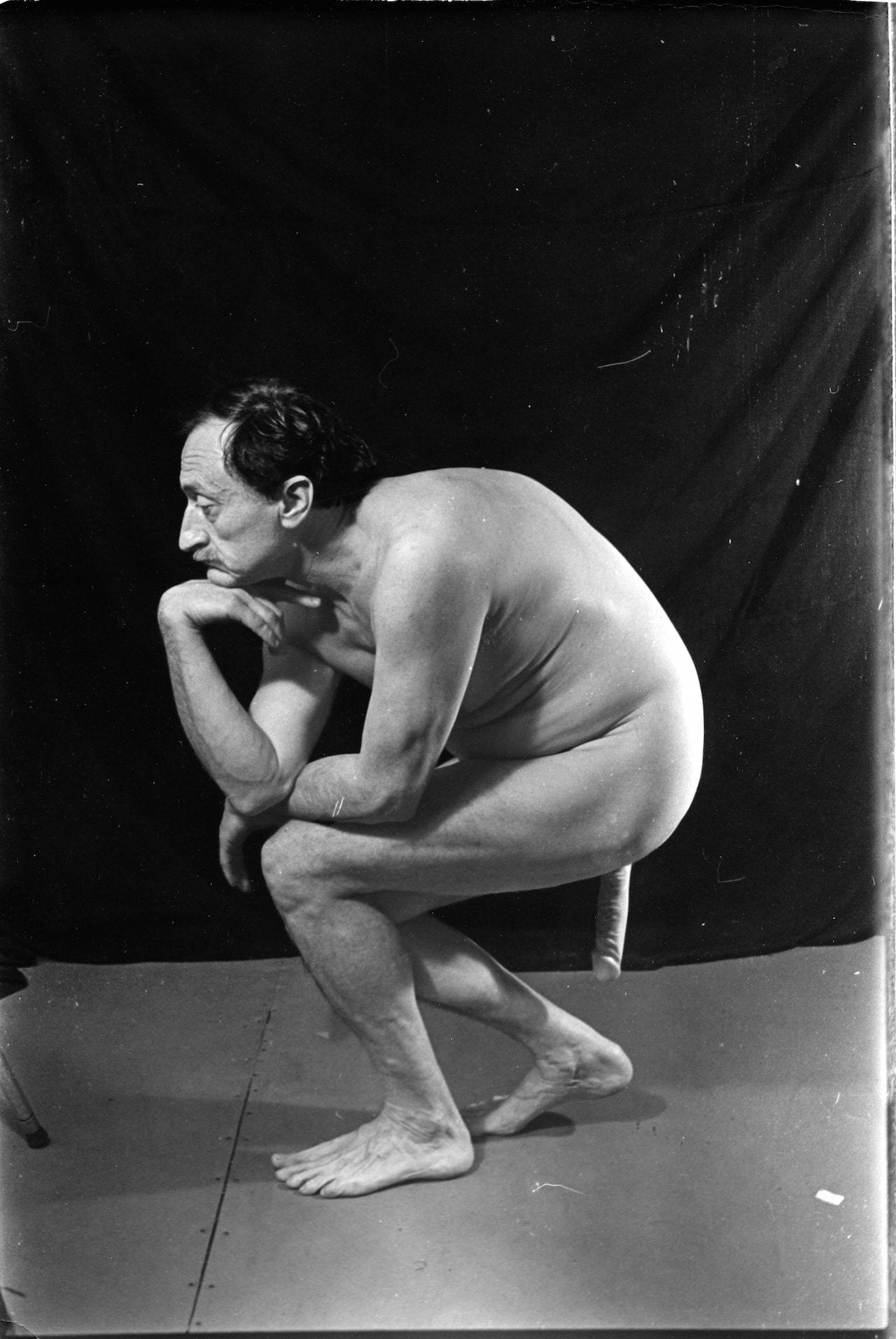
Working across media, the contemporary artists Schube has selected have a diverse and conceptual approach to image-making. “From space to space it’s important to think about the connections; it’s very haptic,” she explains.
The exhibition starts in the 1950s with Dutch photographer and filmmaker Johan van der Keuken’s We Are 17, a series of portraits of his young friends in Amsterdam. Focusing on body language and the codes of fashion, German artist Andrzej Steinbach’s icy staged portraits provide a contemporary reflection on identity and youth.
The next pairing is of German photographers Heinrich Riebesehl and Arne Schmitt. Riebesehl’s People in the Elevator, made in the 1960s, comprises portraits created inside the lift of the Nieue Hannoversche Presse building over the course of half a day, while Schmitt’s short film focuses on the relocation of this building from the city centre to its outskirts, and the shifting meaning of press in the public sphere.
Czech photographer Josef Koudelka’s photographs of the Soviet-led invasion of Prague in 1968, following a brief period of liberation, represent the next period of history. This iconic work finds its contemporary counterpoint in the work of Seoul-based web art group Young-Hae Chang Heavy Industries, whose text-based Flash animation, Cunnilingus in North Korea, meditates on changing forms of protest, media and body politics.
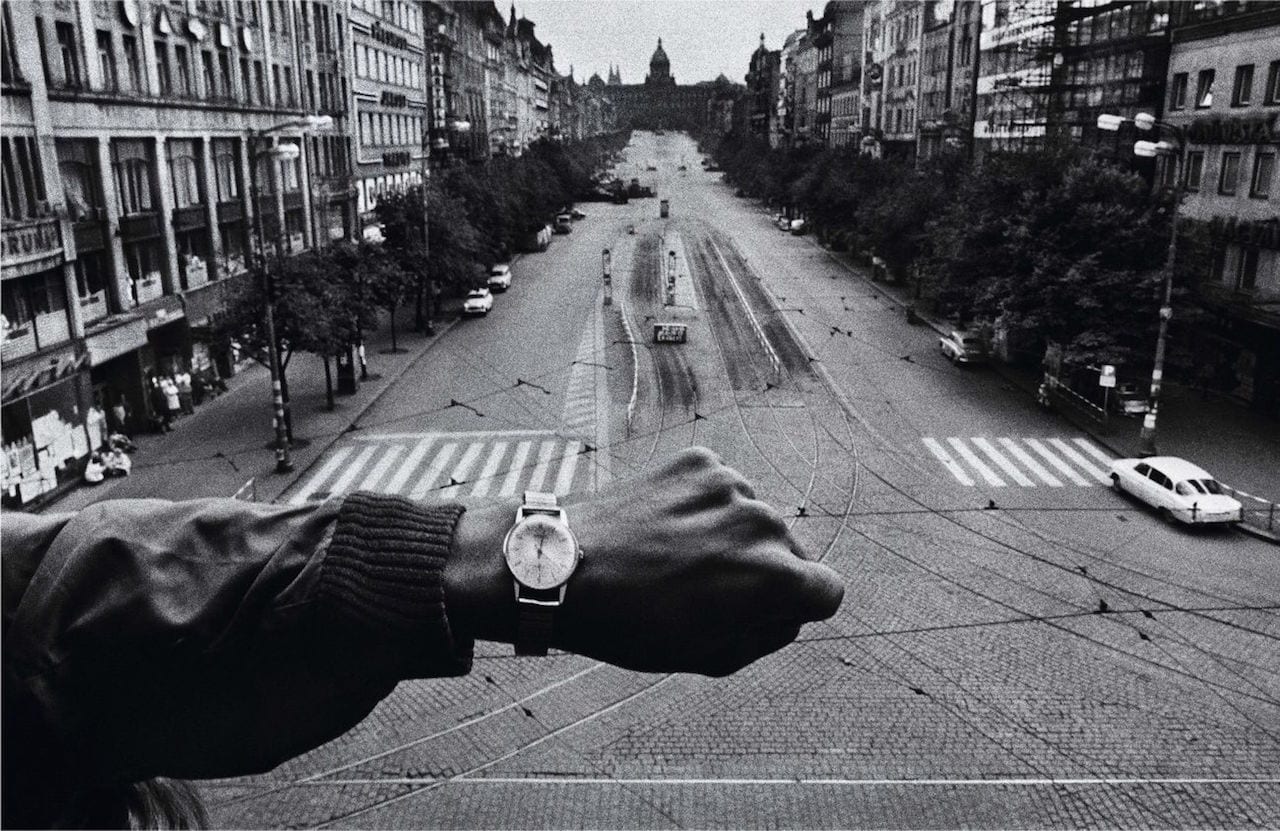
Daido Moriyama takes us into the 1980s with his brutal monochrome street photography of the mutating, post-nuclear landscape of urban Japan. Translating the street into a physical realm, German artist Delia Jürgens’ sculptural installation uses everyday material to look at the traces of life.
The exhibition reaches the collapse of the Soviet Union in Ukrainian artist Boris Mikhailov’s series of theatrical self-portraits I Am Not I, a work that ridicules Soviet machismo with its anti-heroism. German artist duo Beep Off proposes an interactive performance in response that invites visitors to dwell on our codes of morality.
Lastly, German photographer Helga Paris’s portraits of young people in the suburbs of Berlin in the 1990s are paired with a project by Croatian artist Hana Miletić. Created in the ethnically diverse suburb of Molenbeek in Brussels, The Molem Collective charts a young man’s coming of age and the history of hip-hop through images of his trainers accompanied by a selection of songs.
Raising questions and themes that remain highly pertinent in our current climate, 1938. Birthday Party with Guests draws us back to its starting point in the final room, which brings together work from the museum’s collection created that year by artists such as Max Beckmann, Ella Bergmann- Michel, Max Ernst, Gisèle Freund, Paul Klee, and Kurt Schwitters.
1938. Birthday Party with Guests is on show at Sprengel Museum in Hanover until 03 June. sprengel-museum.com This article was first published in the March issue of BJP, available from www.thebjpshop.com
